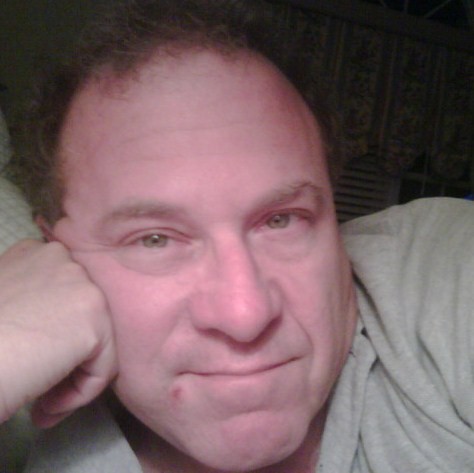Broadcast 10/3/2010 at 1:32 PM EDT (83 Listens, 130 Downloads, 2747 Itunes)
Rob Kall Futurehealth Radio Show Podcast
| Copyright © FutureHealth Administrator, All Rights Reserved. Do not duplicate or post on youtube or other sites without express permission. Creative commons permissions for this site do not apply to audio content or transcripts of audio content. | ||||
Notes from the interviewÂ
(numbers are estimates of time into interview)
bi-polar-- big change from before onset of use of meds for bi-polar meds.
Early death showed up with atypical anti-psychotics
new study shows people dying average of 46.
Do we have this form of so-called care that are making people disabled and poor physical health, leading to early death-- that's what facts, studies by NMIH shows. Extraordinary medical misadventure.
atypical antipsychotics
FIrst generation of ant-psychotics-- thorazine, haldol-- standard neuroleptics-- understood that these would cause tardive dyskinesia-- tongue darting out, trouble walking, eating holding pens-- a sign that your basal ganglia are being damaged and you're losoing motor control. That set in with the use of the drugs at the rate of 5% per year. So, after four year
Risperadal and Zyprexa
academic scientific advisors, actually paid spokesmen, said these new drugs were so much more safe and effective-- almost like they didn't cause problems at all.
This was complete nonsense-- people died, there was weight gain, diabetes showed up.
Because of this false story, people of all kinds had this drug prescribed.
Because of the false story of how safe these atypical drugs were, the use of these drugs exploded.
They were the leading generator of revenues in the US of any medications-- Antipsychotics!!!
One out of ever 145 people in the trials died for studies of Zyprexa.
We give these antipsychotics to kids-- to two years olds, four year olds.
Study shows notable shrinkage of the frontal lobes after one year. Why gift that to
Chemical imbalance theory of mental imbalance came to prominence in "70s and "80s and it was proven it was not true.
False story-telling-- prior to 1980's psychiatry as a profession felt it was fighting for its survival. Use of psychiatric drugs was declining--
problems with anti-psychotics, valium, benzodiazapenes, tricylics...
Psychiatry was looking for a way to save psychiatry.
We need to wrap ourselves in the white coats like other doctors.
So, as a financial solution, they, under a medical model, created the DSM3, saying that the drugs were a medical approach to treating known diseases. This was a marketing approach.
What separated psychiatrists from social workers and psychologists, they could prescribe drugs.
Same time that they launched DSM3, they started  APA press  and training schools on how to tell the story to the press, holding press conferences telling the story of great medical progress.
When story of Prozac comes to market that it is so safe, so efficacious, it can make you better than well-- that psychiatrists have learned the brain so well they could give you a designer personality.
Germans almost didn't allow it to get to market. Suicides were hidden.
Profession of psychiatry presented a known false story to the public.
Scientology--
Scientologists began complaining that Prozac was causing some people to become suicidal.
Because it was brought to the public by Scientologists,... Â about 25 min in
Eli Lily-- this is a fantasy brought to the public by the scientologists.
Trained psychiatrists to say that drug reduces suicide risk, that real risk is that they don't take the message.
WSJ articles come out and it's exactly what they plotted and .... it became a way to persuade the public that the drugs were more effective.
30 minutes in
1987
Number ofpeople on disability has tripled since we embraced this paradigm of drugs.
Deaths have gone up.
Iatrogenic or drug caused deterioriation.
psychiatrists at local levels who don't really know what the research shows.
We can talk about the moral act of medicating children that started in the 1990s.
We need to expand the marketing to children
When the tested antidepressants in pediatric populations they found it didn't even work in short term.
Joseph Biederman-- the guy who, quote, discovered juvenile bi-polar illness...
What happens when youfind documents going to beteween Biederman and Jannsen is you see a lot of money flowing to Biederman, in the millions of the dollars. ..... Â 35 minutes.
Reconceived Oppositional defiance disorder-- temper tantrums.
He also shows that he says that he will show that kids will be chronically and need these drugs for the rest of their lives.
How long should we expect children put on these drugs to live.
Expert: my guess is 30, 35, we'll see them dying in droves.
Their own studies show that once this happens, these kids tend to become rapid cyclers, they become severely ill, will become chronically ill as adults-- cognitive decline, physical illness, early death.
When you put that story together it's the most extraordinary attack on american children that you can imagine.
One in every 16 American children hits 18 and is seaid to be in dneed of drugs for life.
I don't know of any greater betrayal that could be possible than turning kids.... Â Â
This is one of the worst horrors.
I give a list of betrayers
The betrayal has to be associated with academic psychiatrists.
The reason I don't blame the drug companies so much-- we don't entrust the drug companies with the expectation that they will be honest with us.....
Blowback for his whistleblowing--
v-fluence-- they run disinformation campaigns-- were keeping tabs on Whitaker.
SAMSHA part of health and human services of the federal government.
NY Times article today on atypical antyipsychotics
This book  is solidly evidence-based,
Between 10 and 25 Â percent of children put on ADD stimulant medications be diagnosed as bipolar. THen they are put on atypical antipsychotics and they are a on a career path to being a lifelong user of psychiatric medications and this lifelong chronic path.
Questions for next show:
FDA, Health Insurers, ADD/ADHD, CHADD, Thom Hartmann, Russell Barkley
biofeedback.
Size: 29,540,969 -- 0 hrs, 58 min, 12 sec








